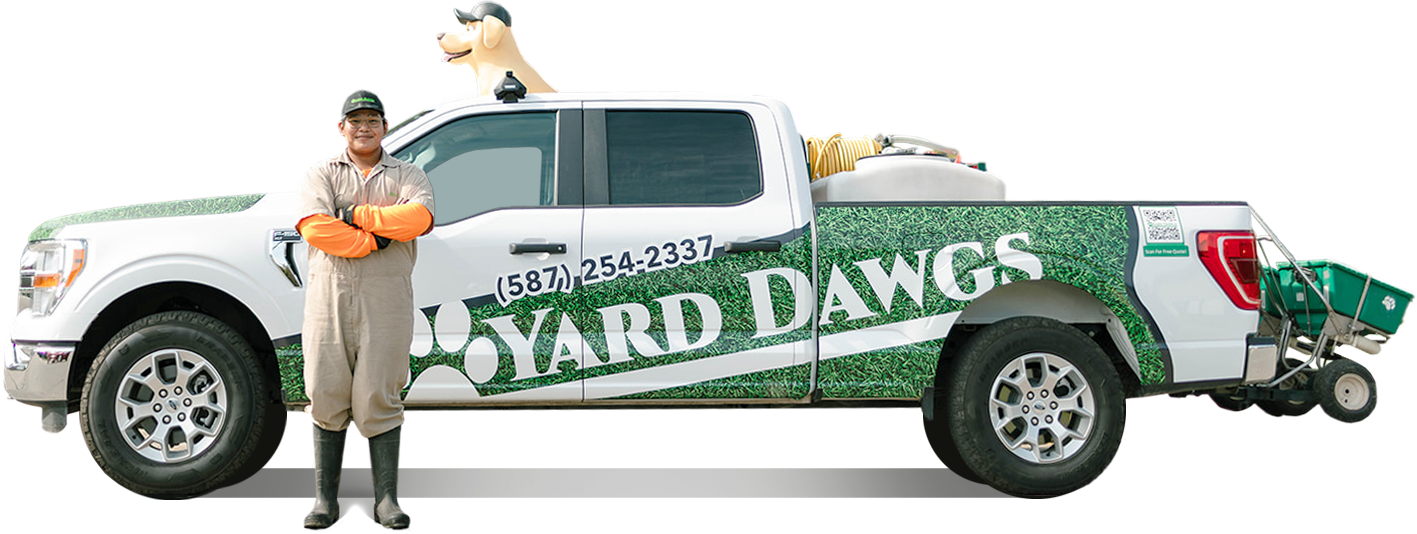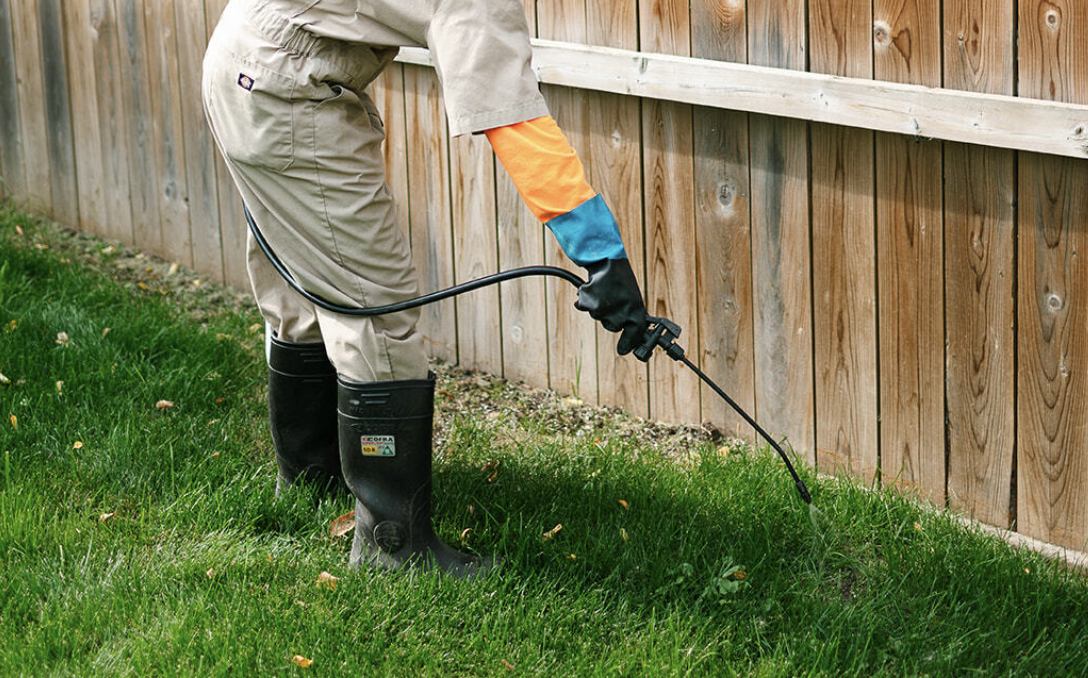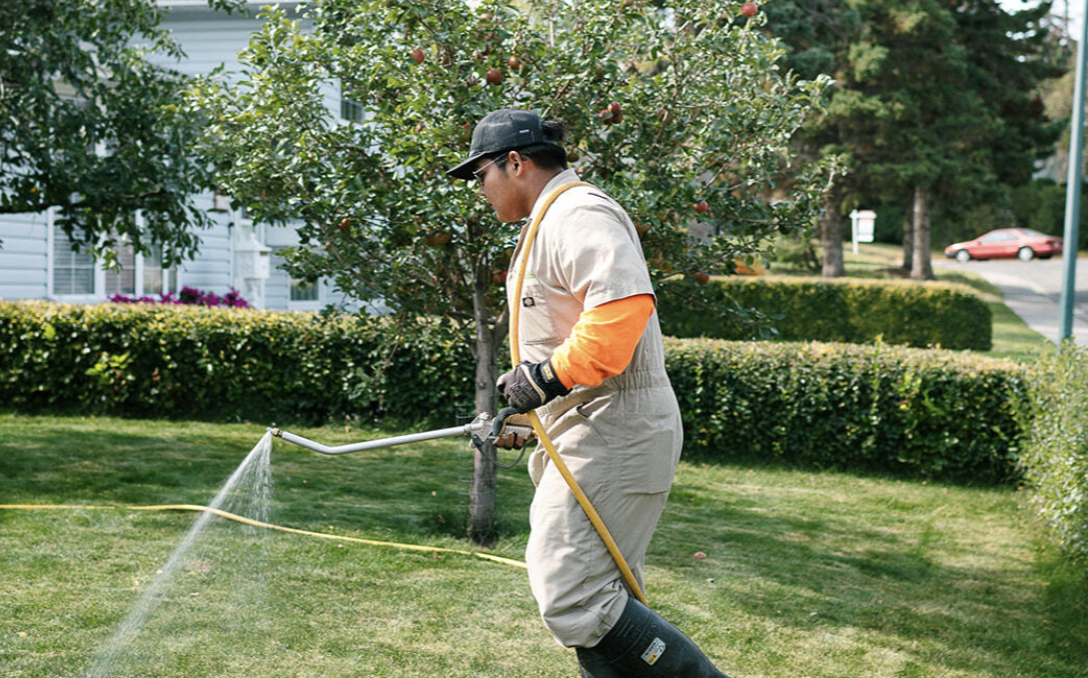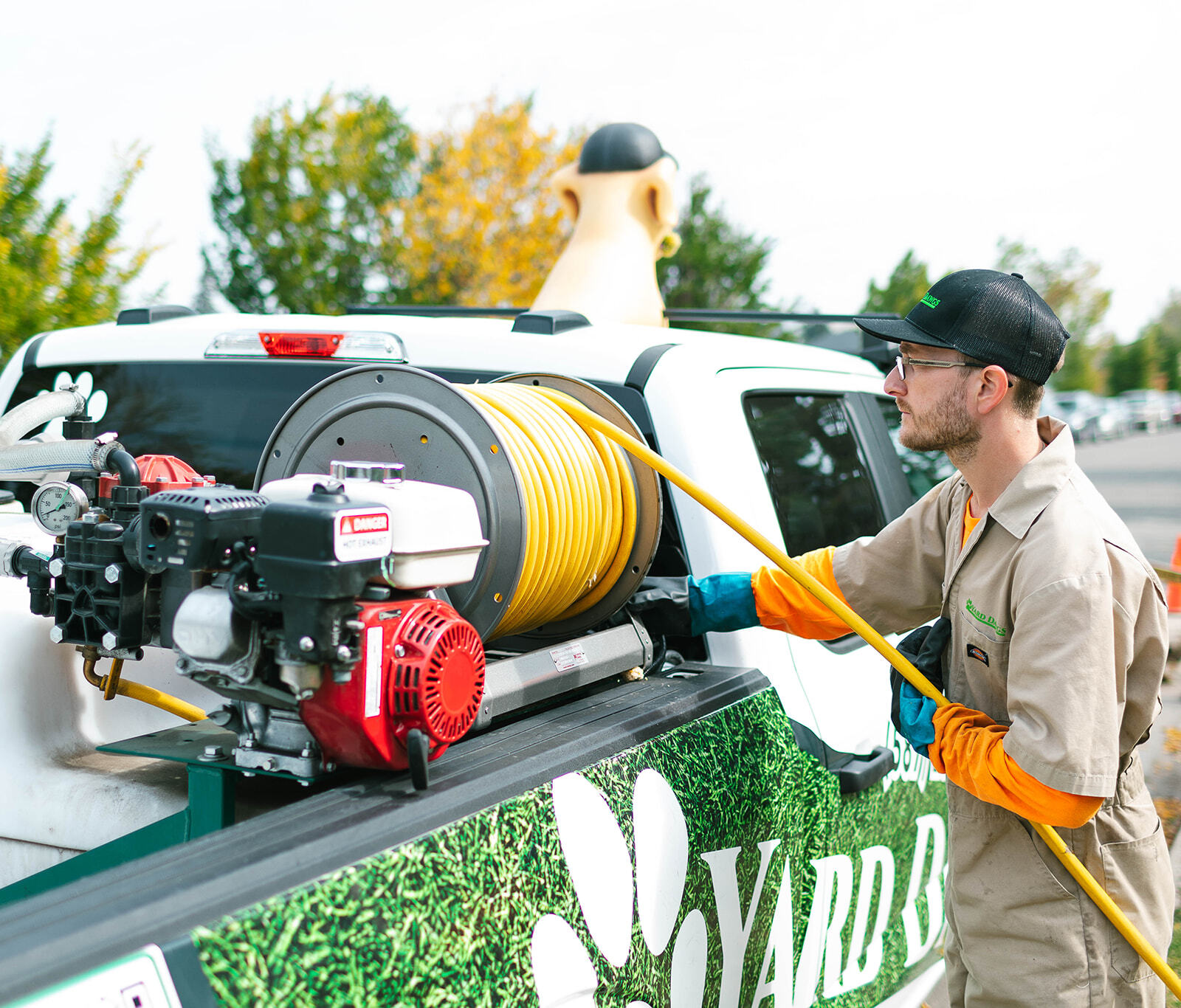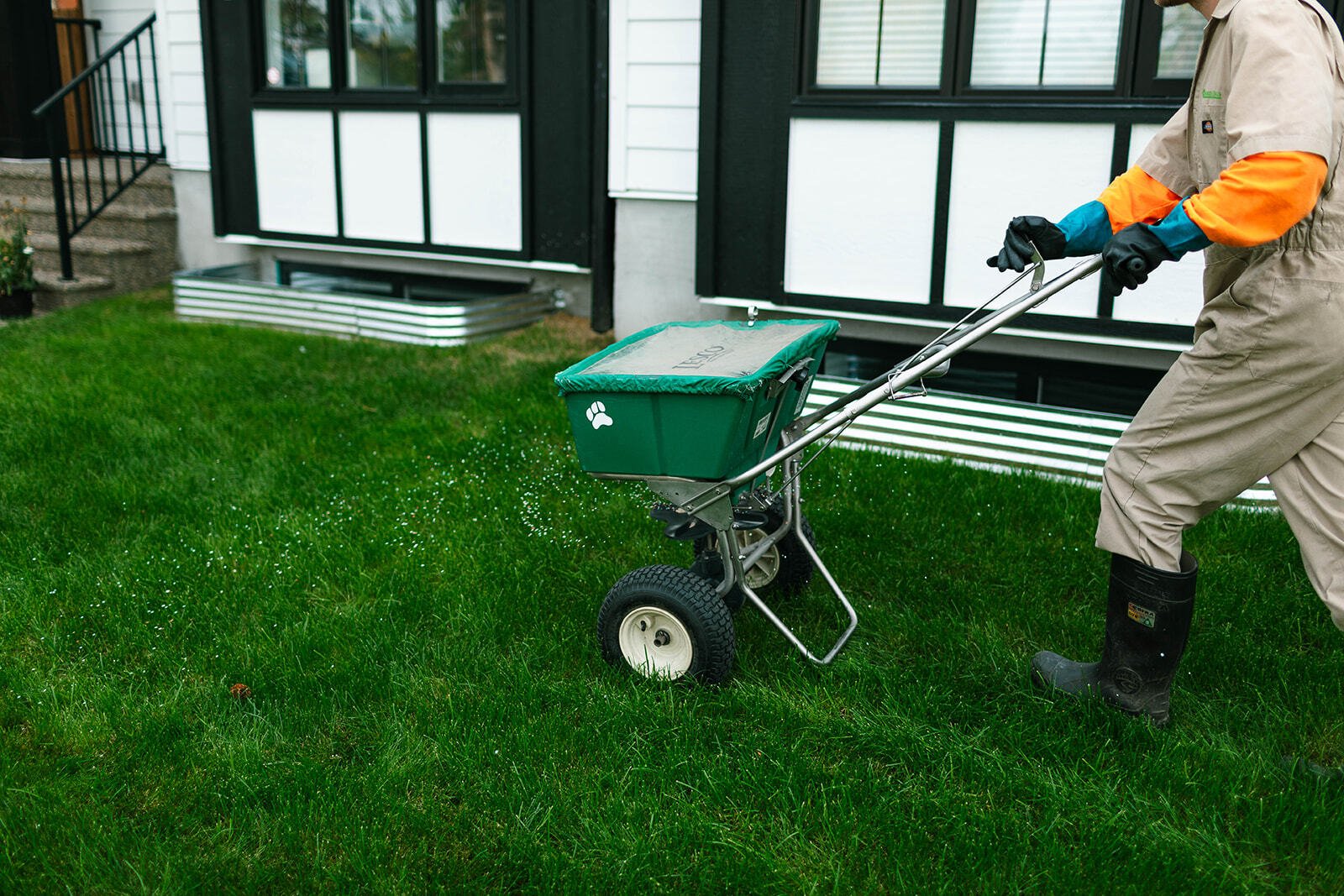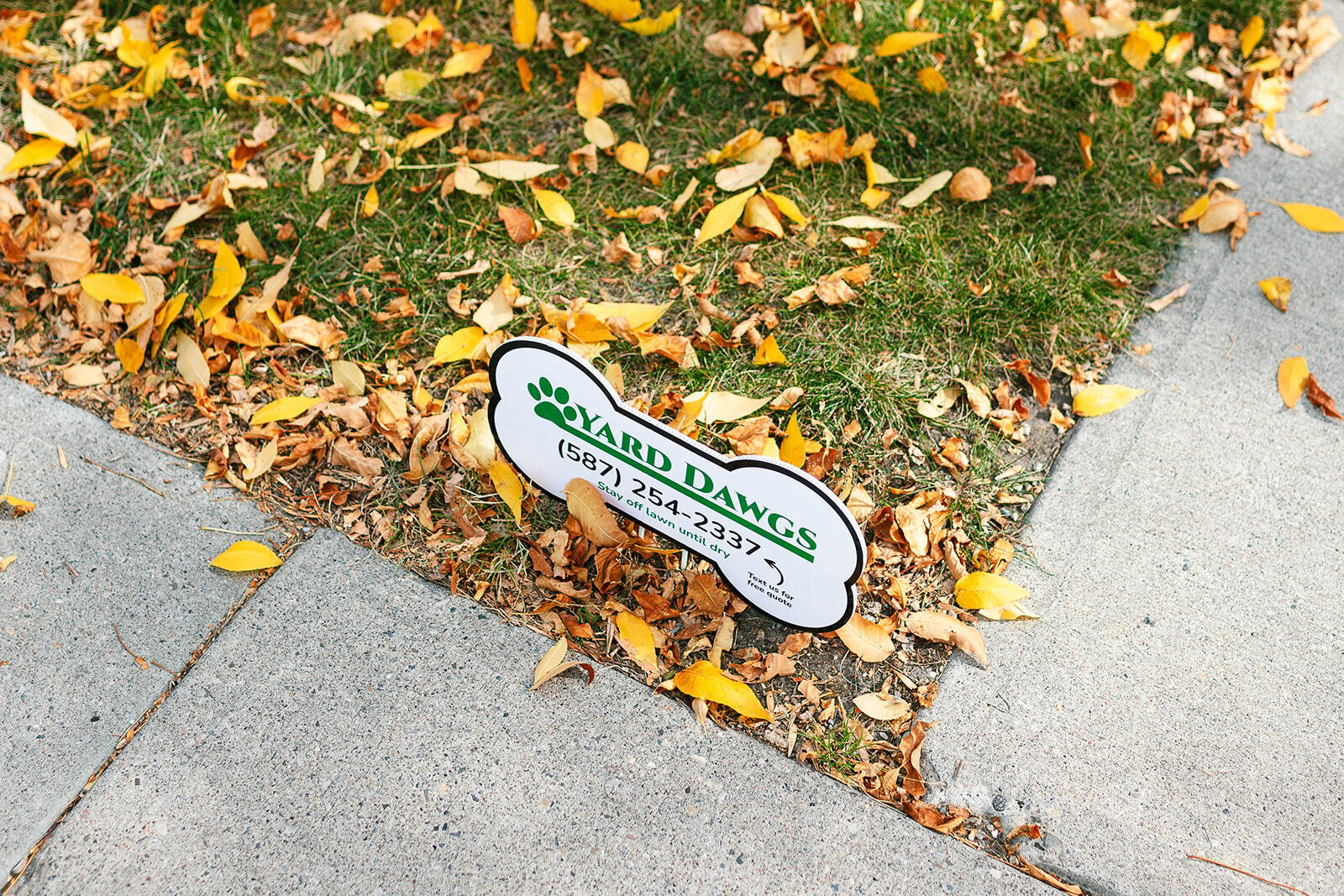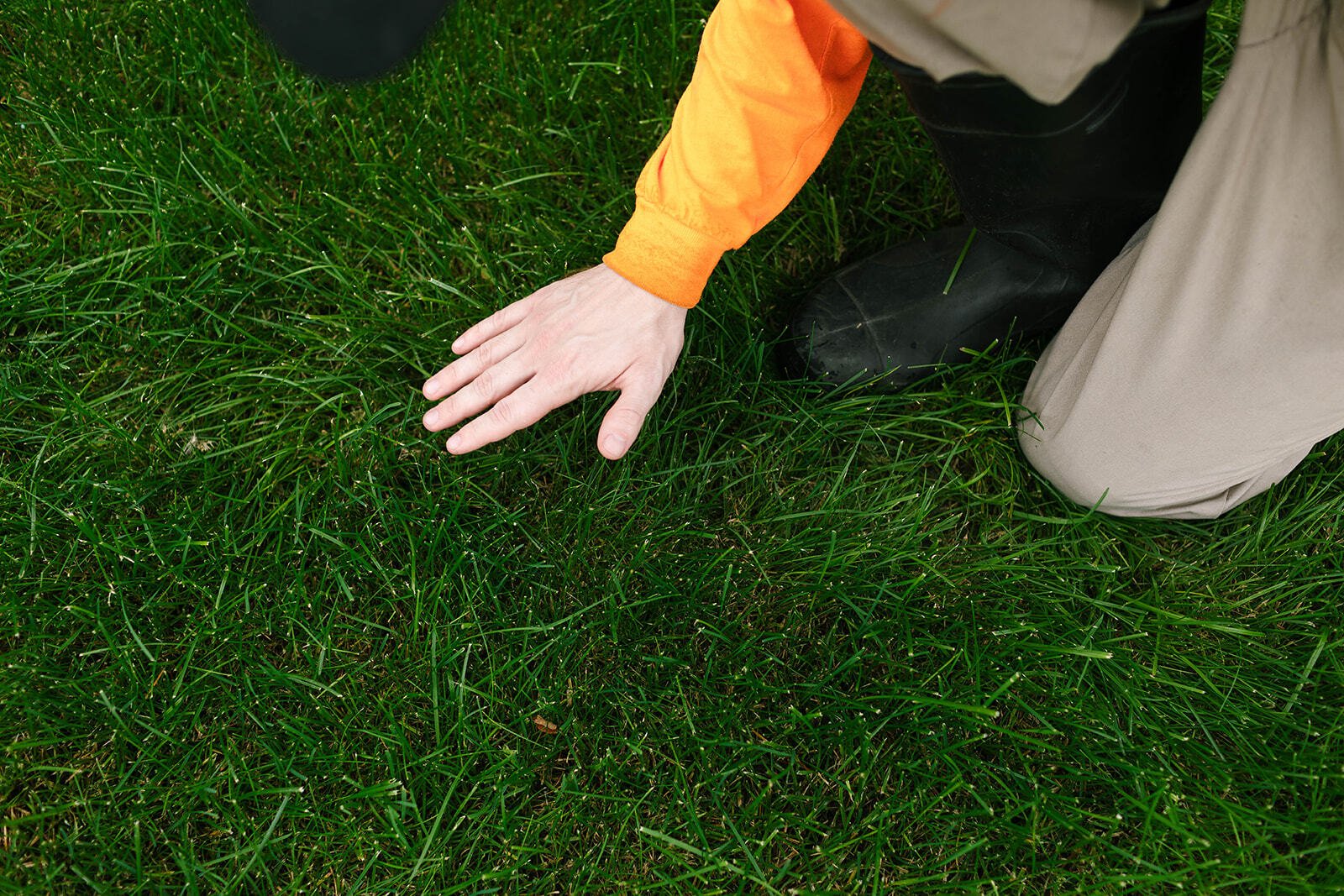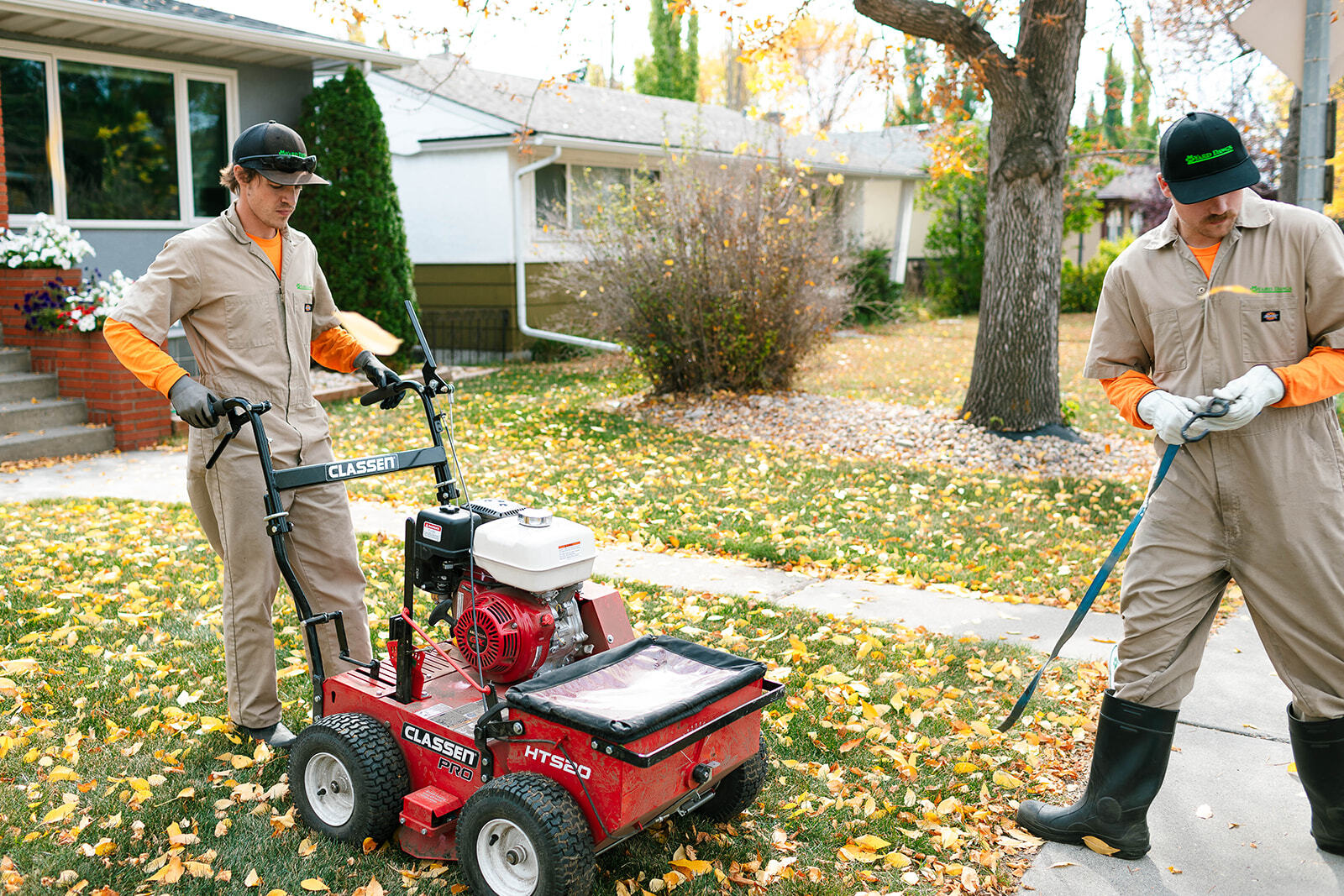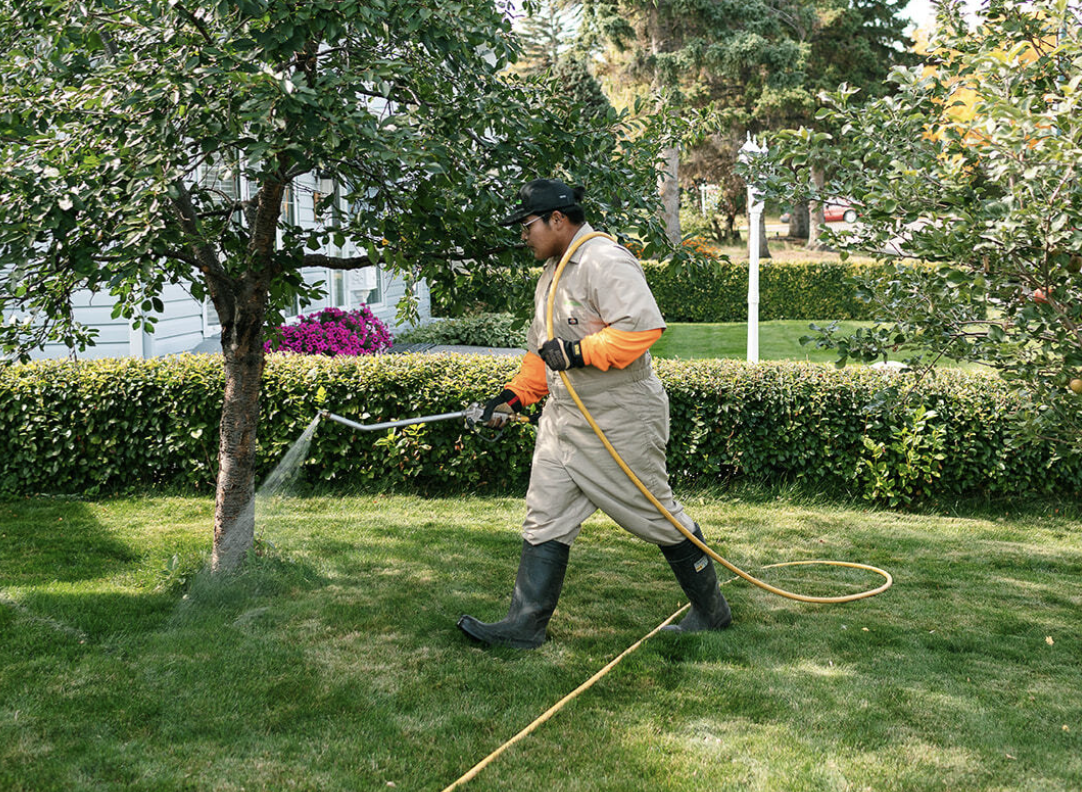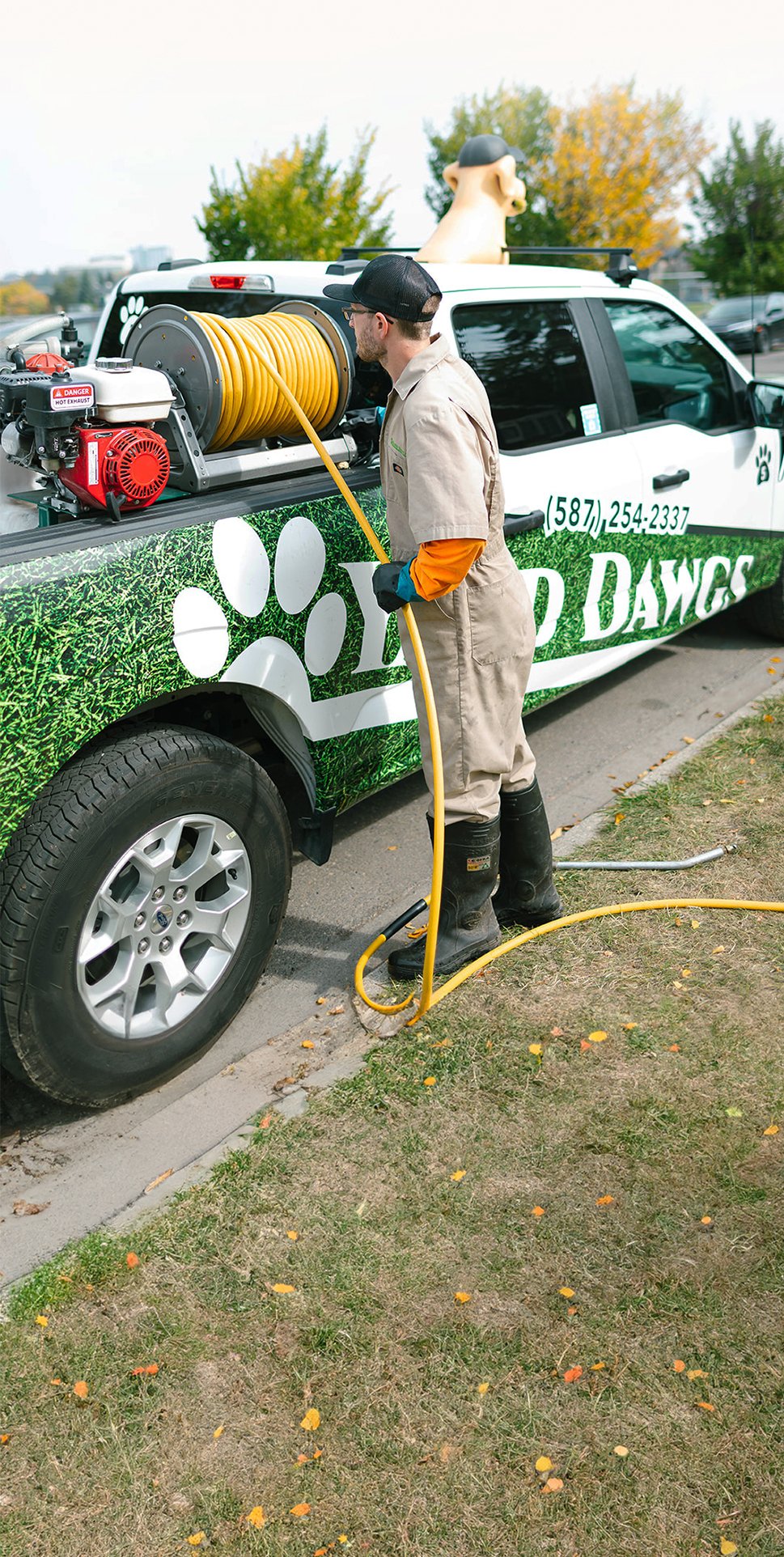As the snow melts and the sun begins to warm the ground, your lawn wakes up from its winter dormancy. Spring is the most important time to set the foundation for a healthy, green lawn for the rest of the year.
Whether you live in Alberta or Saskatchewan, your spring lawn care routine needs to be tailored to the unique climate of the Prairie Provinces. Use this step-by-step checklist to get your lawn growing strong.

Assess Winter Damage
Walk your lawn and inspect thoroughly
Before you do anything, take a walk around your yard and check for signs of winter stress. Look for matted grass, brown patches, compacted areas, or signs of snow mold.
Clear debris
Remove branches, dead leaves, and any other debris that may have accumulated over the winter. This allows your grass to breathe and makes your next steps more effective.
Rake to Refresh the Lawn
Remove thatch buildup
Heavy snow and ice often lead to thatch buildup. Use a strong-tined rake to loosen matted grass and pull up dead organic material. This allows sunlight and moisture to penetrate the soil more effectively.
Open the soil surface
Raking also helps open up the top layer of soil, encouraging new growth and improving airflow. It is an essential part of waking your lawn up from winter.
Test and Amend the Soil
Use a soil test kit
Soil testing will give you accurate insights into your lawn’s pH level and nutrient deficiencies. This helps you apply only the fertilizers and soil amendments your grass truly needs.
Add lime or sulfur if needed
Lawns in Alberta and Saskatchewan often lean toward acidic soil. Apply lime to raise the pH or sulfur to lower it, depending on your test results.
Aerate the Lawn
Relieve soil compaction
Spring is a great time to aerate, especially if your lawn saw heavy traffic or snow compaction over the winter. Aeration involves removing small cores of soil, which improves water, nutrient, and oxygen absorption.
When to aerate
Aim to aerate when the soil is moist but not soggy. This usually falls between late April and mid-May, depending on weather conditions.
Overseed Bare or Thin Patches
Choose the right seed
For Alberta and Saskatchewan, cool-season grass types like Kentucky bluegrass, fescue, or perennial ryegrass are ideal. Make sure to choose a seed blend suitable for your region and lawn type.
How to overseed effectively
After aerating, spread grass seed over bare or thin patches. Rake lightly to ensure good seed-to-soil contact. Water the area daily until new grass establishes.
Fertilize with a Balanced Formula
Use a slow-release spring fertilizer
Feeding your lawn in spring helps it recover from winter and supports strong root growth. Choose a slow-release fertilizer with balanced nitrogen, phosphorus, and potassium nutrients.
Timing is crucial
Apply fertilizer once the ground has thawed and the grass is beginning to grow. Avoid fertilizing too early, as nutrients may be washed away before your grass can use them.
Apply Pre-Emergent Weed Control

Prevent weeds before they sprout
If crabgrass or other annual weeds have been a problem in the past, apply a pre-emergent herbicide. This creates a barrier that stops weed seeds from germinating.
Combine with fertilizer
Look for combination products that include both fertilizer and pre-emergent weed control for a more efficient application. Follow product instructions closely for best results.
Water Wisely
Adjust your watering schedule
Spring often brings rain, so you may not need to water frequently early in the season. However, if the weather is dry, ensure your lawn receives about one inch of water weekly.
Best time to water
Water early in the morning to reduce evaporation and prevent fungal growth. Deep and infrequent watering is more effective than daily shallow watering.
Mow with Care
First mow of the season
Wait until your grass reaches about three inches tall before mowing for the first time. Cut it to about two to two and a half inches, and never remove more than one-third of the grass blade at a time.
Keep blades sharp
A dull mower blade tears the grass rather than cutting it cleanly, leading to brown tips and stress. Sharpen your blades before the first mow and throughout the season.
Control Pests and Diseases
Watch for early signs
Monitor your lawn for signs of insects like grubs or diseases such as snow mold. Brown or irregular patches can indicate underlying issues.
Choose safe treatments
Use environmentally safe products to control pests and diseases, especially if you have pets or children. Consider integrated pest management approaches before applying chemical solutions.
Maintain Edges and Borders
Recut garden and path edges
Neat edges instantly improve the appearance of your lawn. Use a half-moon edger or string trimmer to redefine the lines between your grass and garden beds or walkways.
Add fresh mulch
Spring is also a good time to add mulch around trees and shrubs to retain moisture and suppress weed growth.
Hire Professional Lawn Care Services
Spring lawn care takes time, effort, and local knowledge. If you want great results without the hassle, let our team handle them.
At Yard Dawgs Lawn Care, we offer expert services designed for Alberta and Saskatchewan homeowners. From aeration and overseeding to fertilizing and weed control, we help your lawn look its best from the start of the season.


